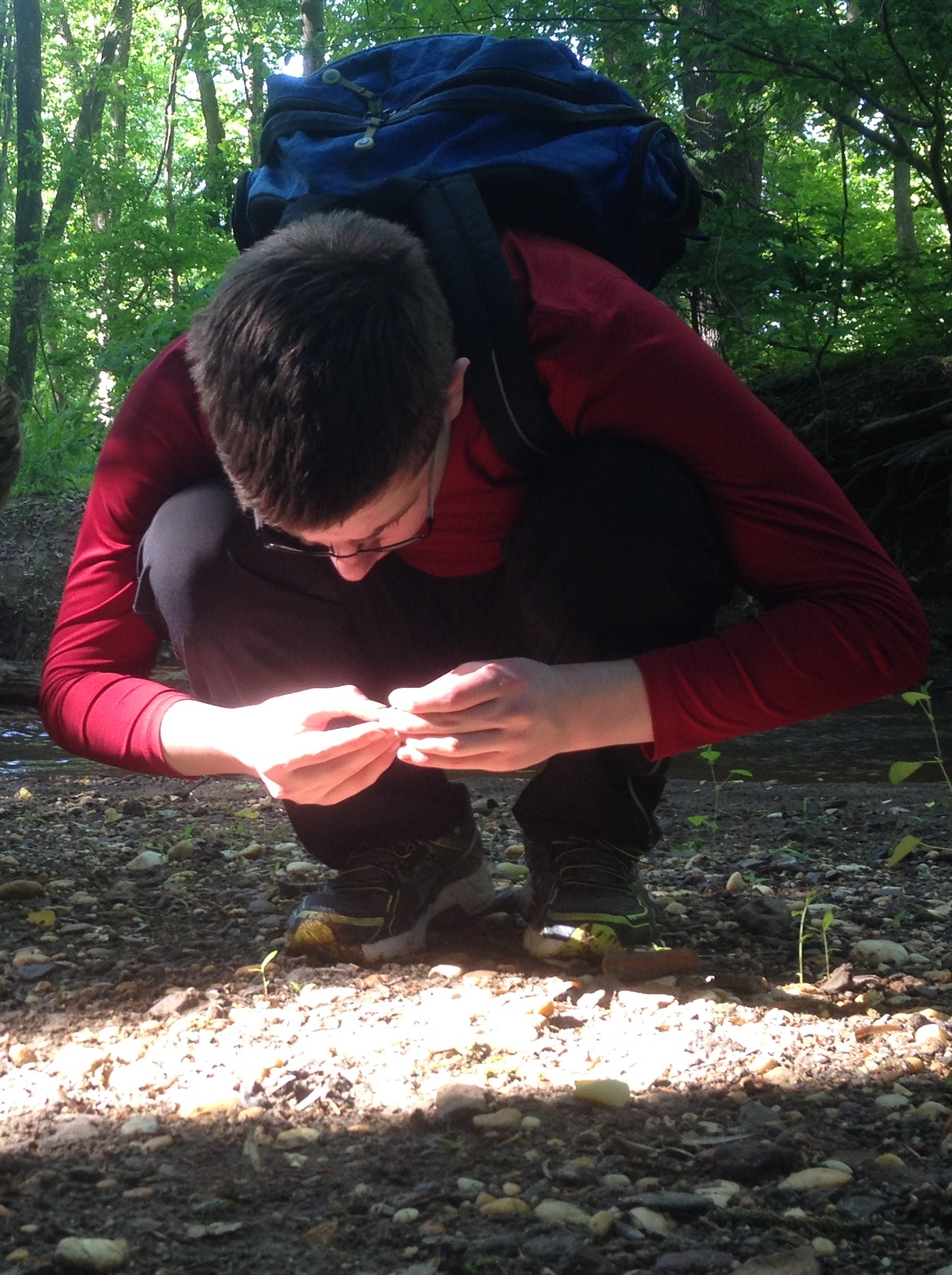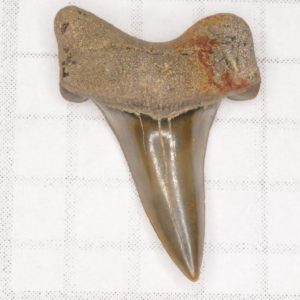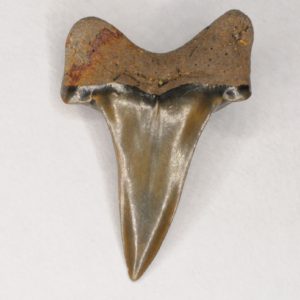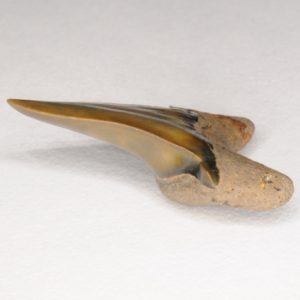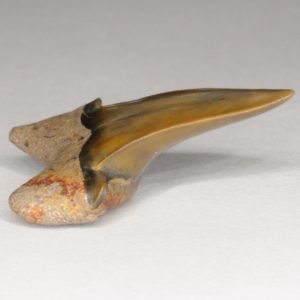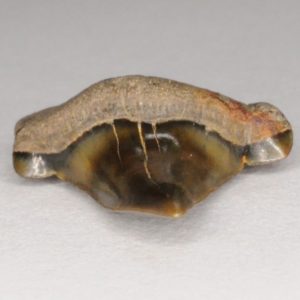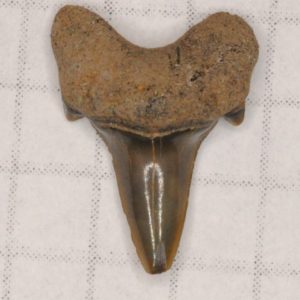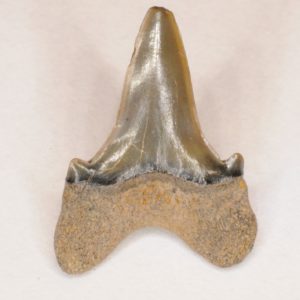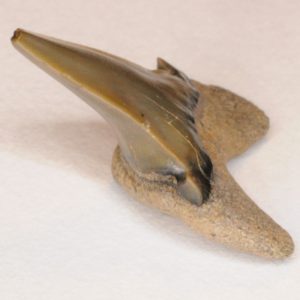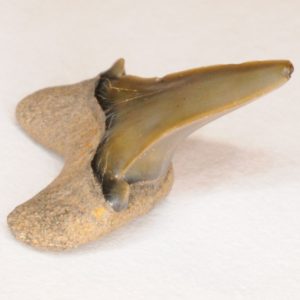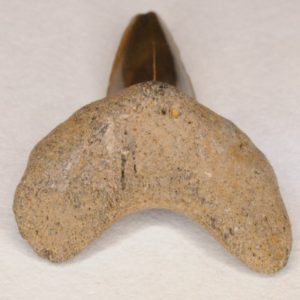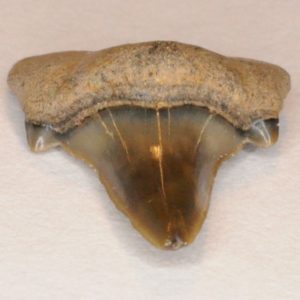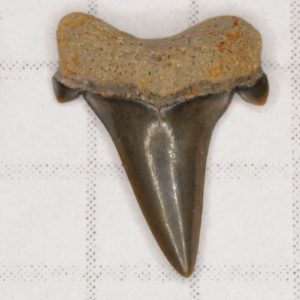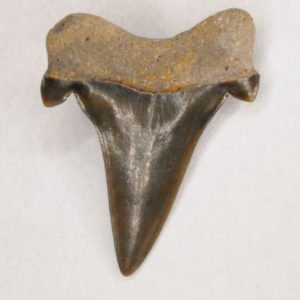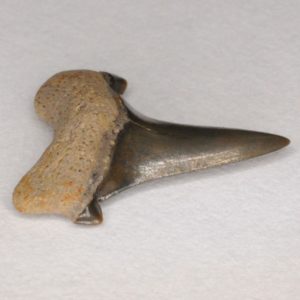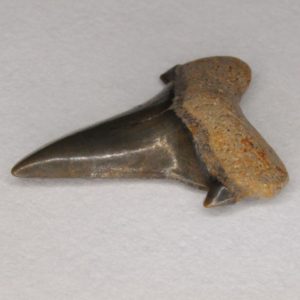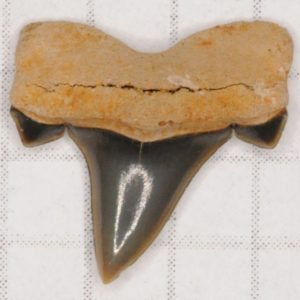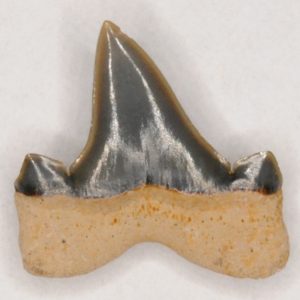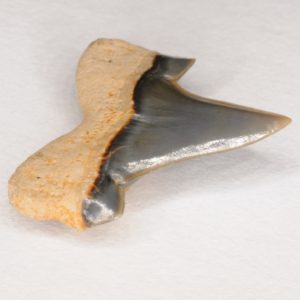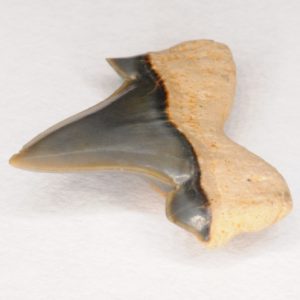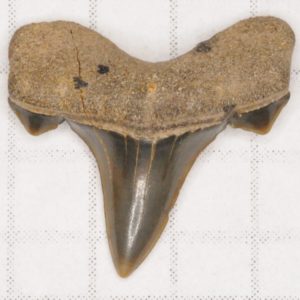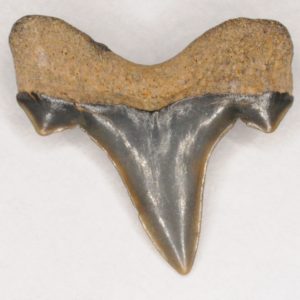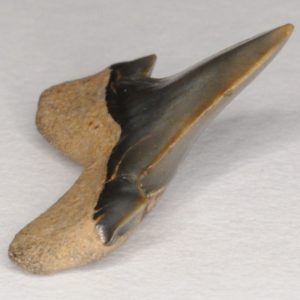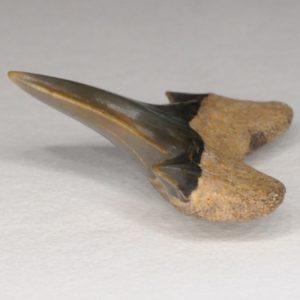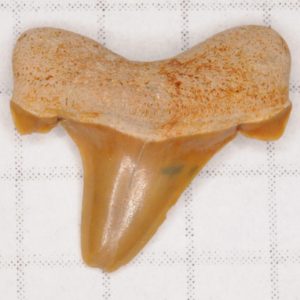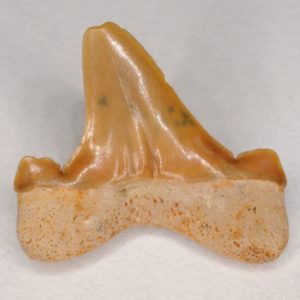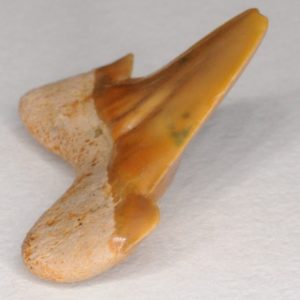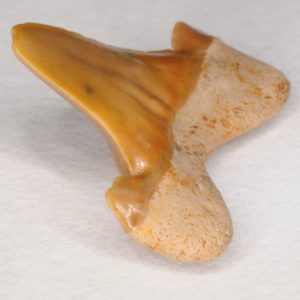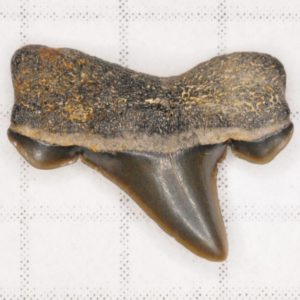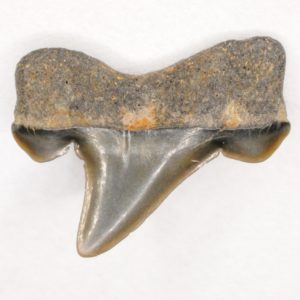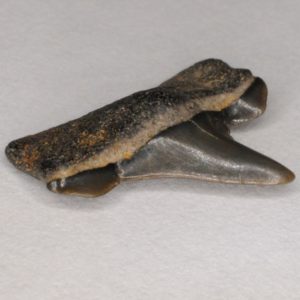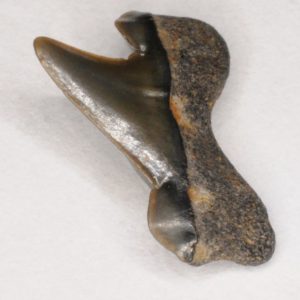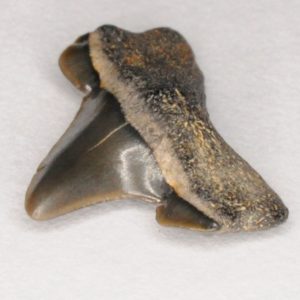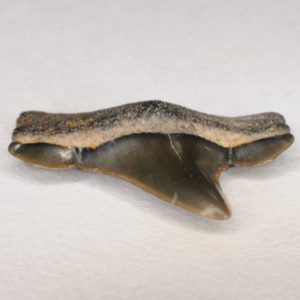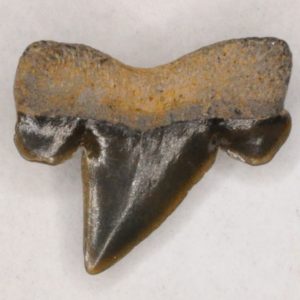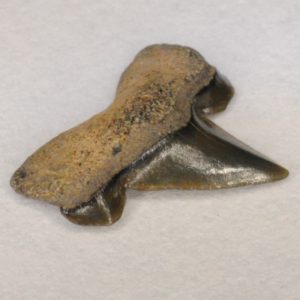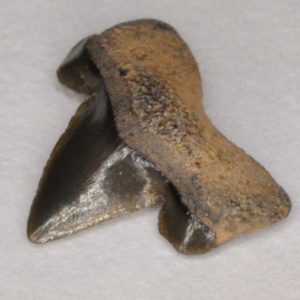NJfossils.com
"Fossils aren't a hobby, they're a lifestyle."Mackerel (Cretalamna “appendiculata” aka Cretolamna “appendiculata“)
Age – Late Cretaceous; Commonality – Common (slightly less common than Archaeolamna); Size – average: a little under ¾ inch, max: 1 inch (in our area)
Cretalamna are probably my favorite type of tooth to find because of their attractive appearance.
These teeth are similar to the teeth of Archaeolamna. The main differences are in the cusplets and the lingual protuberance. The cusplets are scalloped and lower, especially in anterior teeth. The lingual protuberance is reduced and the whole tooth is a little more flattened compared to Archaeolamna. There are several Cretalamna species represented in New Jersey. Referring all of them to the “species” appendiculata is likely wrong (even though that is the trend among NJ collectors), especially when appendiculata is strictly a Turonian species. Quotations around “appendiculata” are necessary as it is a paleobucket (a species name that is used to group many indeterminate/undescribed species under). cf. Cretalamna biauriculata maroccana is an example of another Cretalamna type of tooth that can be found (although much more rarely). The teeth pictured below are the “common” type.
Cretalamna is also special in that it possessed a cutting dentition, which is different from the tearing/grasping dentitions of most Cretaceous sharks. Cutting dentitions are the most efficient type of dentition (information from Siteseer on TheFossilForum). It is most likely what makes Cretalamna one of the most successful genuses, living from the Albian to the Ypresian.
They are thought to be a distant ancestor to Otodus (Carcharocles) megalodon.
